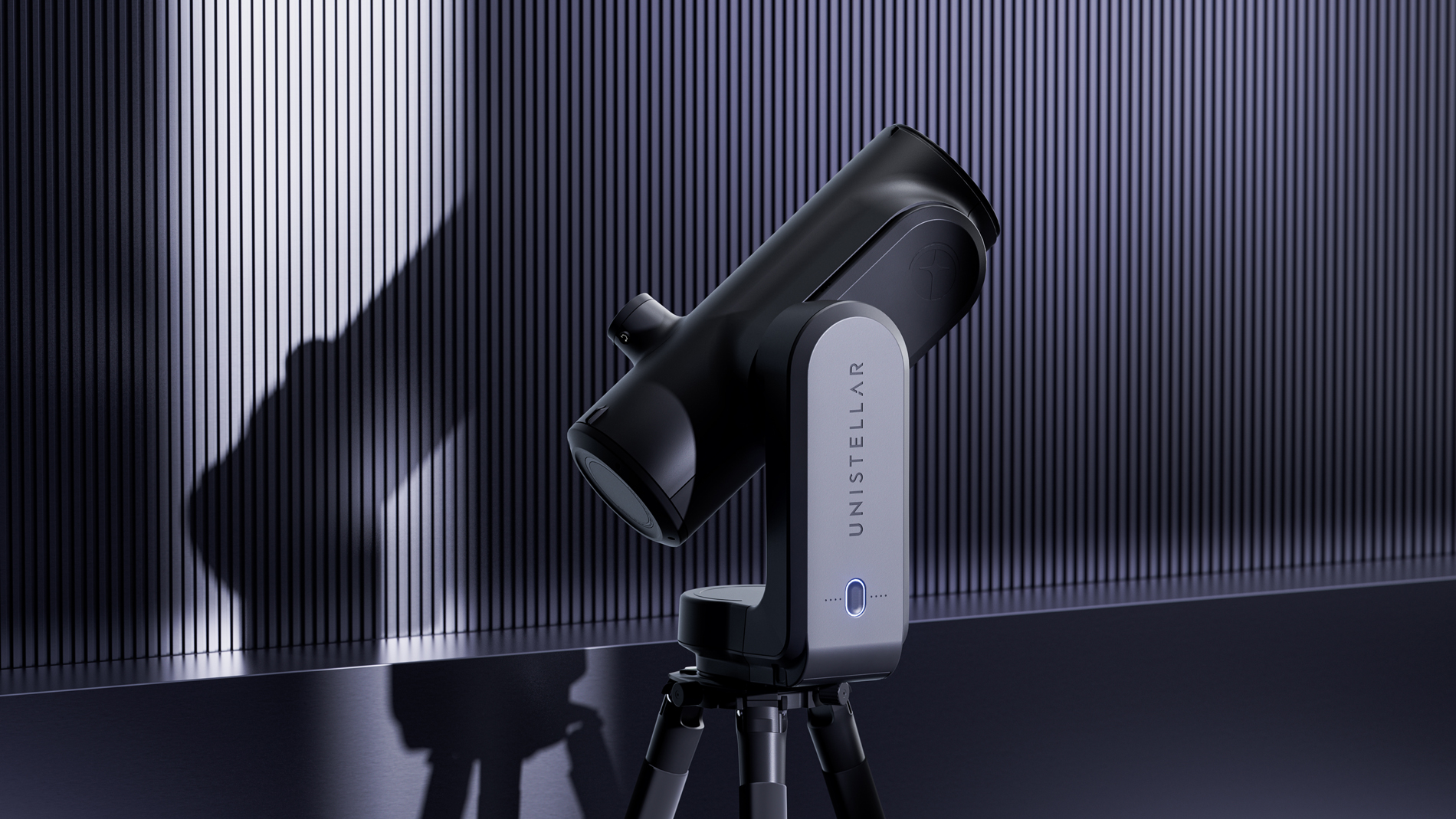Nikon and Unistellar have teamed up to create these awesome app-controlled smart telescopes
Stargazing made easy – if you can afford it

Smart telescopes are all the rage in the stargazing world, and they're probably the future of astrophotography. Now Unistellar has cemented its position in this field with the dual launch of the Odyssey and Odyssey Pro at CES 2024.
They're strikingly similar to the Celestron smart telescope that was also announced at CES, and what’s neat about Unistellar’s Odyssey and Odyssey Pro is that they're controlled remotely using a newly developed Unistellar app.
From the comfort of your sofa you can view what your Odyssey telescope sees on your smart device, and control which part of the night sky it's aimed at, using the telescope’s ‘autonomous field detection technology’, which Odyssey also calls a ‘smart star finder’.
The makers say the new GPS-equipped smart telescopes can “autonomously point towards and track any desired celestial object from the moment they are turned on, so you can be admiring outer space in just a couple of minutes.“ In short, it’s stargazing made easy.
Unistellar innovation meets Nikon optics
Unistellar is a familiar name in the astrophotography world – it launched the Unistellar eQuinox 2 at last year’s CES, and also makes the mighty eVscope 2 (yours for $4,999 / £3,999 / about AU$6,500). This year’s models are much smaller and lighter and have a wider appeal, thanks in part to what Unistellar calls ‘Multi-Depth Technology’, which enables you to instantly switch between viewing nearby planets and faraway galaxies and nebulae.
You can easily choose what to look at via the Unistellar app for iOS and Android, with handy info about each of the 5000-plus planets and nebulae in the app database for newbies and enthusiasts to absorb, too.
Nikon has brought its lens making expertise to the table in these new smart telescopes too, designing the high-precision autofocus optics used in both models, and the electronic eyepiece found in the Pro model only – ideal for those who prefer to get hands on with their telescope. On the technical front, both models have a field of view of 34 x 45 arcmin, an 85mm mirror diameter and a 320mm focal length. There's more info on the Unistellar website.
Get daily insight, inspiration and deals in your inbox
Sign up for breaking news, reviews, opinion, top tech deals, and more.
At 4kg, the Odyssey and Odyssey Pro are much lighter than Unistellar’s previous offerings in the Expert range, and come supplied with a sturdy tripod, although their five-hour battery life doesn’t compare. Both models are available from the Unistellar website or camera retailers – the Odyssey will set you back $2,499 / £2,199 (about AU$3,750) while the pricier Odyssey Pro costs $3,999 / £3,499 (about AU$6,000). That’ll count out most people, but Unistellar has nonetheless transformed the experience of getting lost among the stars.
We’re covering all of the latest CES news from the show as it happens. Stick with us for the big stories on everything from 8K TVs and foldable displays to new phones, laptops, smart home gadgets, and the latest in AI.
And don’t forget to follow us on TikTok for the latest from the CES show floor!
You may also like

Tim is the Cameras editor at TechRadar. He has enjoyed more than 15 years in the photo video industry with most of those in the world of tech journalism. During his time as Deputy Technical Editor with Amateur Photographer, as a freelancer and consequently editor at Tech Radar, Tim has developed a deeply technical knowledge and practical experience with cameras, educating others through news, reviews and features. He’s also worked in video production for Studio 44 with clients including Canon, and volunteers his spare time to consult a non-profit, diverse stories team based in Nairobi. Tim is curious, a keen creative, avid footballer and runner, and moderate flat white drinker who has lived in Kenya and believes we have much to enjoy and learn from each other.